LAB REPORT
Science and Technology Making Headlines
Feb. 19, 2016

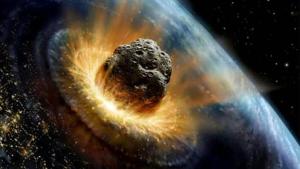
An artist's illustration of asteroids, or near-Earth objects. Credit: ESA - P.Carril
Avoiding killer asteroids
Scientists believe they can prevent the potentially devastating consequences of an asteroid's impact with Earth. One technique to divert an asteroid, called kinetic impact, uses a spacecraft to crash into the body at high speeds.
This approach delivers the momentum of the spacecraft, while also providing an additional boost of momentum through the production of impact crater ejecta exceeding the asteroid's escape velocity. Researchers at Lawrence Livermore have been studying the effectiveness of the kinetic-impactor strategy by carrying out 3D simulations of the process.
LLNL planetary defense researchers find that asteroid deflection by kinetic impact is sensitive to a range of asteroid characteristics, including strength, porosity, rotation and shape.

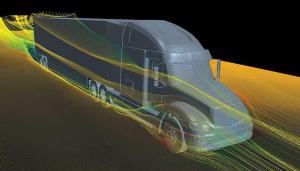
Industry projects are among the first to be selected for funding and partnerships with national labs under the U.S. Department of Energy’s High Performance Computing for Manufacturing (HPC4Mfg) Program.
HPC4mfg on a roll
Ten High Performance Computing for Manufacturing (HPC4Mfg) projects got a boost in funding this week from the Department of Energy.
Under the HPC4Mfg program, Lawrence Livermore and other national laboratory experts in advanced modeling, simulation and data analysis will collaborate with industrial partners on project teams to address manufacturing challenges that will aid in decision making, optimize processes and design, improve quality, predict performance and failure, quicken or eliminate testing and/or shorten the time of adoption of new technologies.
Lawrence Livermore heads the program and partners with Lawrence Berkeley and Oak Ridge National Laboratories.

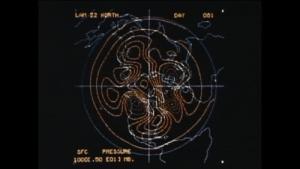
The first three-dimensional global atmospheric model created by LLNL physicist Chuck Leith.
Pioneering the science of climate change
The Cold War competition with the Soviet Union fueled the space race, the arms race and, by extension, a host of groundbreaking discoveries and inventions including the science of climate change.
In 1960, Lawrence Livermore physicist Chuck Leith produced the first three-dimensional global atmospheric model. He enlisted Hollywood animators to produce a visual rendering — wiggling neon lines denoting pressure and precipitation overlaid on a map of the Earth.
Leith’s student, former LLNL climate scientist Mike MacCracken converted Leith’s three-dimensional model of the atmosphere into a two-dimensional model of the climate, tracking the movement of heat and energy to investigate the cause of ice ages. He discovered that, while simple physics produced a faithful representation of the climate, it could not explain profound shifts in eons past. What then, was responsible for the end of ice ages?
“You think it’s hard to change the climate,” said MacCracken, “but looking at the past climate, it shows the relatively small influences have had a large effect.”
Scientists had long hypothesized that increased atmospheric carbon dioxide could lead to planetary warming, but it was not until the 1960s the possibility of human-caused climate change began to really take hold in mainstream science.

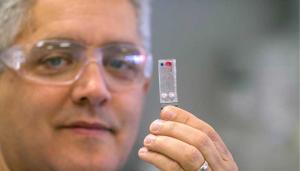
Radiobiologist Matt Coleman displays a passive flow lateral device for biodosimetry developed at Lawrence Livermore National Laboratory. It’s a single use protein detection assay similar to the medical diagnosis instrument Coleman helped develop for NASA for use in deep space. Photo by Julie Russell
Checking up on astronauts
In the future, NASA astronauts journeying into deep space may give themselves a health checkup with the aid of a small medical device developed by a team of scientists, including one from LLNL.
Laboratory radiobiologist Matt Coleman is part of the six-scientist team, including researchers from NASA’s Ames Research Center, the University of California, Davis and Sandia National Laboratories/California, that has developed a small, portable medical diagnosis instrument.
The patent covers the development of a comprehensive in-flight medical diagnostic system in a hand-held format weighing less than one pound for human deep-space missions such as a mission to Mars, which is expected to take six months each way.


Element 117, first discovered by Lawrence Livermore researchers teamed with the Joint Institute for Nuclear Research.
Limits of the periodic table
Science gave the official welcome to these four new chemical elements -- ununtrium, ununpentium, ununseptium and ununoctium -- late last year. Their temporary names refer to their atomic numbers or the number of protons -- 113, 115, 117 and 118 -- respectively. With these four new additions, all the spaces in the seventh row of the periodic table of elements have been filled.
The periodic table has come a long way since 1869 when Dimitri Mendeleev, the Russian scientist who established the first version of the periodic table, which since then has continued to expand with a steady trickle of new members.
Through to the arrival of flerovium (114) and livermorium (116), named after the Flerov Laboratory and Lawrence Livermore National Laboratory, respectively, in May 2012, the work of chemists has been becoming increasingly difficult.

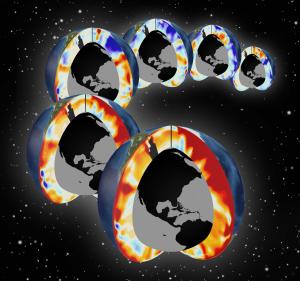
Pacific and Atlantic southern sections showing upper-ocean warming for the past six decades (1955-2011). Red colors indicate warming and blue colors indicate cooling/ Image by Timo Bremer/LLNL.
The deep unknown
Ocean water has absorbed more than 90 percent of excess heat in the atmosphere and nearly 30 percent of the carbon dioxide generated by human consumption of fossil fuels.
Lawrence Livermore scientists recently found that the world's oceans are warming at a quickening rate, with the past 20 years accounting for half the increase in ocean heat content that has occurred since pre-industrial times.
The LLNL team, working with the National Oceanic and Atmospheric Administration, analyzed heat content changes in varying depths of the world's oceans using data and models stretching back to 1865.
They found that much of the extra heat in the ocean is stored deep under water, with 35 percent of the additional warmth found at depths below 700 meters. Two decades ago, such ocean depths contained just 20 percent of the extra heat produced from the release of greenhouse gases since the industrial revolution.





